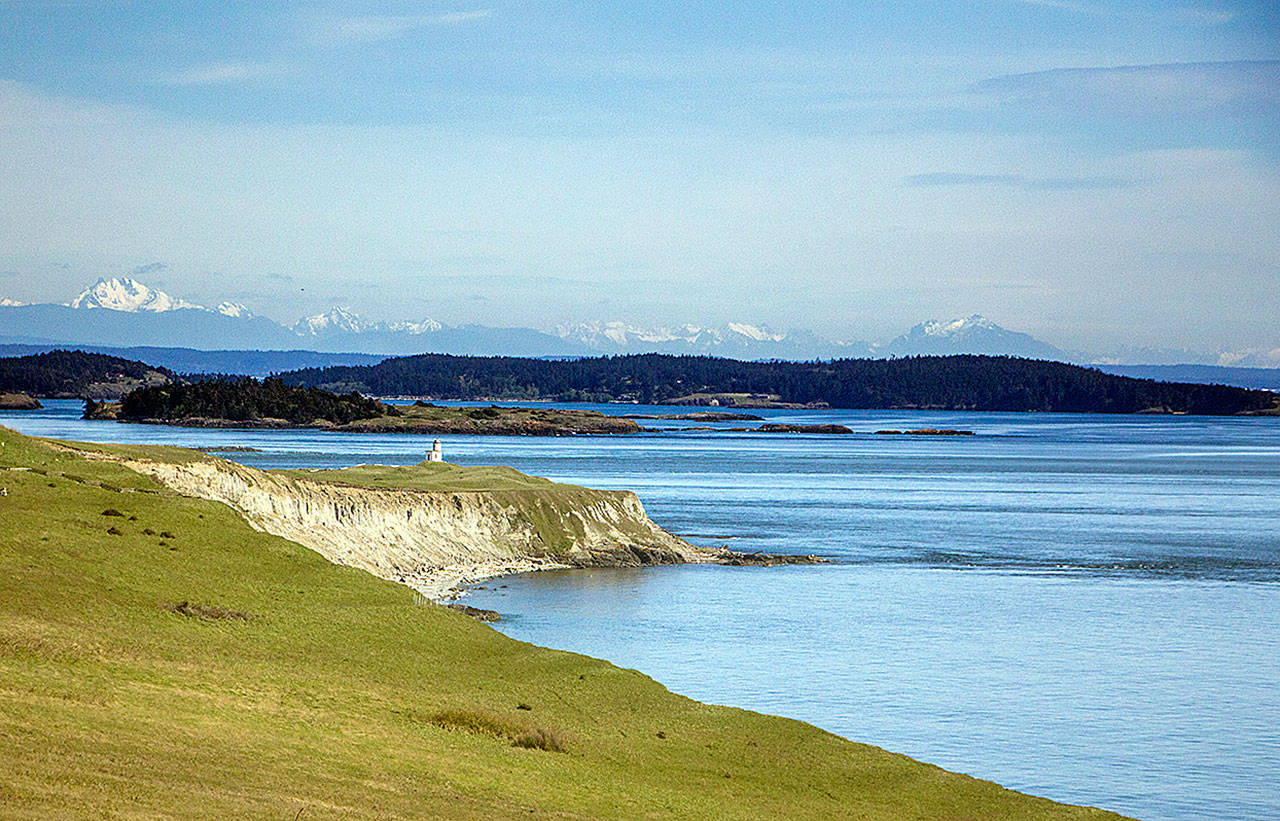Before San Juan County Councilman Rick Hughes moved to the San Juans full-time in 2004, he regularly spent summers and holidays visiting family on Orcas Island.
“Almost every summer we’d drive across country,” said Hughes, who lived in Chicago. “I spent a lot of my summers growing up sleeping outside, sitting on the beach and eating crab.”
The same reasons Hughes vacationed on the islands – like access to hiking and fishing – are enticing a growing number of visitors today. So many visitors frequent the islands, in fact, that local, state and federal government agencies collaborated on an islands’ visitor study to create a plan that ensures the archipelago remains a destination, appealing to both guests and locals.
At the May 7 county council meeting, council members, county staff and members of agencies, like U.S. Fish and Wildlife Service and San Juan County Land Bank, had a roundtable discussion on what they learned from the draft report and to create goals based on the findings.
Elexis Fredy, with the San Juan Island Historical National Parks, noted that the possibilities with the surveys’ results could create infinite future plans.
“It’s been a great starting point,” she said about the study. “We can go a million different directions with the data that we have.”
About four of the 11 members at the table stressed the importance of educating tourists with a physical visitors center, as Paul McFarland with the Department of Natural Resources suggested, or an interactive smartphone app so travelers know what attractions are available at local sites and how to get there.
Lincoln Bormann, with the San Juan County Land Bank, explained that local organizations are already looking into creating an app. He said the county’s terrestrial managers group, a local consortium of conservation land management organizations, have discussed creating a San Juan Islands public lands app to include county trail maps, rules and interpretive information.
Not all representatives were aware of the possible app, which illustrated another common theme of the meeting, which was to encourage more collaboration between the groups.
Fredy noted that working together will also provide more funding opportunities when plans are finalized.
“I think what we’re doing together is a pretty unique thing,” she said, “to have every level of government really working towards … these things.”
Other ideas at the meeting included Fredy’s interest in increasing campsites at the national historical park sites. Bormann said he would like to connect more land bank property together so guests don’t have to drive to different locations. Hughes mentioned that one way to help tourists navigate from the ferries to attractions would be to add more infrastructure, like trails for pedestrians and parking for drivers. Dona Wuthnow, with San Juan County Parks and Fair, added that a separate resident survey should be dispersed so locals can help steward islands land, as well as tourism.
No final plans were made at the meeting, but Hughes emphasized the importance of providing affordable access to the islands, just like he had as a kid, camping on Orcas, and not just “$200-a night hotels.”
“We had access to affordable lodging, and I never want to see that change,” he said. “Our community offers so many treasures, that everyone, no matter what background, should be able to visit, work and live here.”
Draft visitor study results
The findings of the 2017 draft visitor’s study were released last February and include ridership information from Washington State Ferries and other transportation modes; an inventory of local accommodations; counts of people and vehicles at islands’ sites; a survey at those sites; and a survey on the ferries.
These survey results are more comprehensive than the initial part of the draft that the Journal reported on last January.
The ferries survey was completed by 631 visitors and 141 residents on local routes last summer. The main reason visitors said they came to the islands was for the natural scenery, as well as to hike on beaches and view marine wildlife. About 40 percent of visitors on San Juan Island, 35 percent on Orcas and 15 percent on Lopez said it was their first visit.
Those surveyed by ferries also said they felt most crowded when parking in villages and attractions and would like to see more tent camping on the islands, as well as separated bike paths and additional public beaches and forests.
During the same time period, 537 people were surveyed at local sites on San Juan and nine out of 10 of those respondents were tourists.
Those surveyed at San Juan sites said they felt the most crowded at the Westside Preserve. On Orcas, they said they felt the most crowded at Cascade Lake, and on Lopez, they said they felt the most crowded at Watmough Bay Preserve.
Volunteers counted the most people at the surveyed San Juan Island location of Lime Kiln Point State Park, while on Orcas they counted the most at Mount Constitution and on Lopez at Spencer Spit State Park. On the Sunday before last Memorial Day, almost 900 vehicles were counted at Lime Kiln.
When asked how they would cope with overcrowding, the majority of those surveyed at sites said they would just avoid crowds by choosing to visit at a different time.
Of all the tourists interviewed on San Juan Island, 39 percent were from Washington state, 10 percent from California, 8 percent were from Oregon, 36 percent were from another part of the United States, and 7 percent were from another country.
Read the full draft of the visitor’s study below. Visit www.sanjuanco.com/1391/San-Juan-Islands-Visitor-Study to read the study separated by San Juan, Orcas and Lopez Islands.



